Dogs are beloved companions, but for allergy sufferers, finding the right breed can be a challenge. While no dog is truly hypoallergenic, some breeds produce fewer allergens than others. This makes them a better choice for individuals with mild to moderate dog allergies. If you’re looking for a furry friend that won’t leave you sneezing, consider these fantastic small to medium sized dogs that don’t shed (or shed very little).
Understanding Hypoallergenic Dogs
Before diving into specific breeds, it’s crucial to understand what “hypoallergenic” truly means. All dogs produce allergens, primarily through their dander (dead skin cells), saliva, and urine. Hypoallergenic breeds are those that produce less dander or have coats that trap dander, reducing its spread into the environment.
It’s important to remember that individual reactions can vary. Spending time with a dog before bringing it home is always recommended to assess your allergic response.
Top Small to Medium Sized Non-Shedding Dogs
Here are some of the best small to medium sized dog breeds known for their minimal shedding and lower allergen production:
1. Poodle (Miniature and Standard)
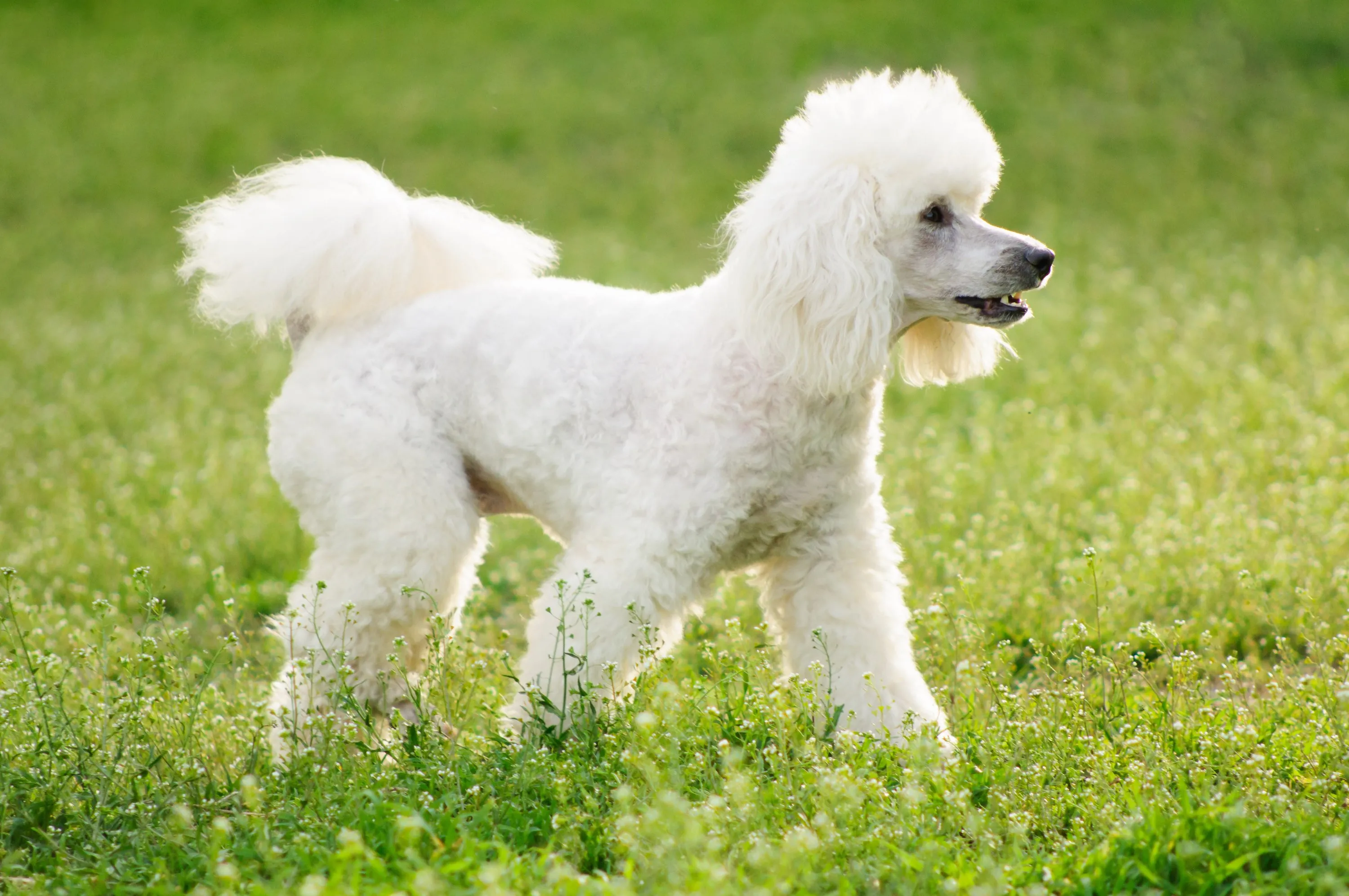 white poodle walking through grass
white poodle walking through grass
Poodles are renowned for their intelligence and hypoallergenic coats. Both Miniature and Standard Poodles boast a dense, curly coat that traps dander, preventing it from becoming airborne. They require regular grooming to prevent matting, but their minimal shedding makes them a great choice for allergy sufferers. Poodles are also highly trainable and eager to please, making them wonderful family pets.
2. Miniature Schnauzer
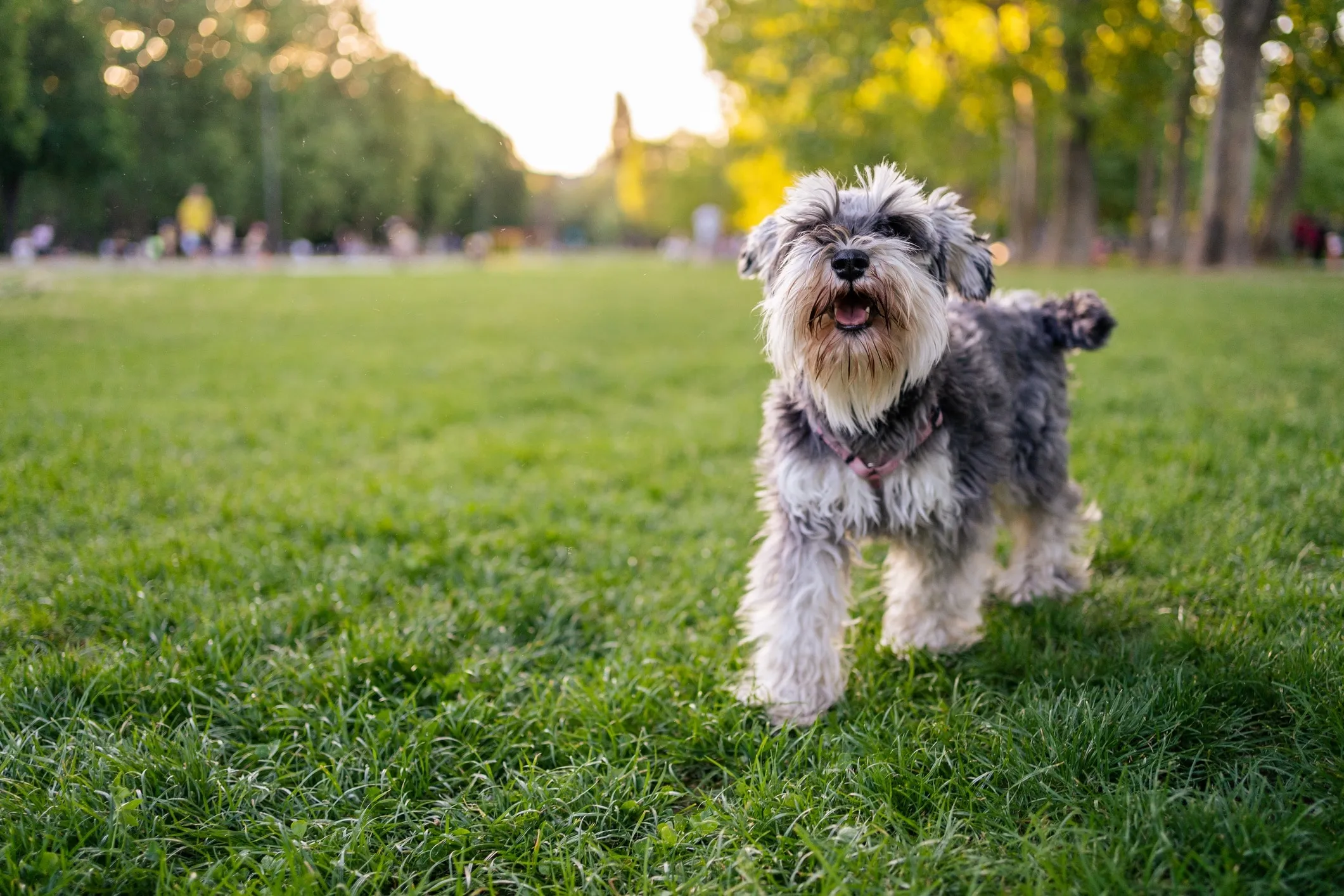 salt and pepper miniature schnauzer wearing a pink harness in a park
salt and pepper miniature schnauzer wearing a pink harness in a park
Miniature Schnauzers are small, sturdy dogs with a distinctive wiry coat that sheds very little. They are intelligent, energetic, and make excellent watchdogs. Their playful personality and moderate exercise needs make them adaptable to various living situations. Regular grooming, including trimming and stripping the coat, is necessary to maintain their non-shedding qualities.
3. Bichon Frise
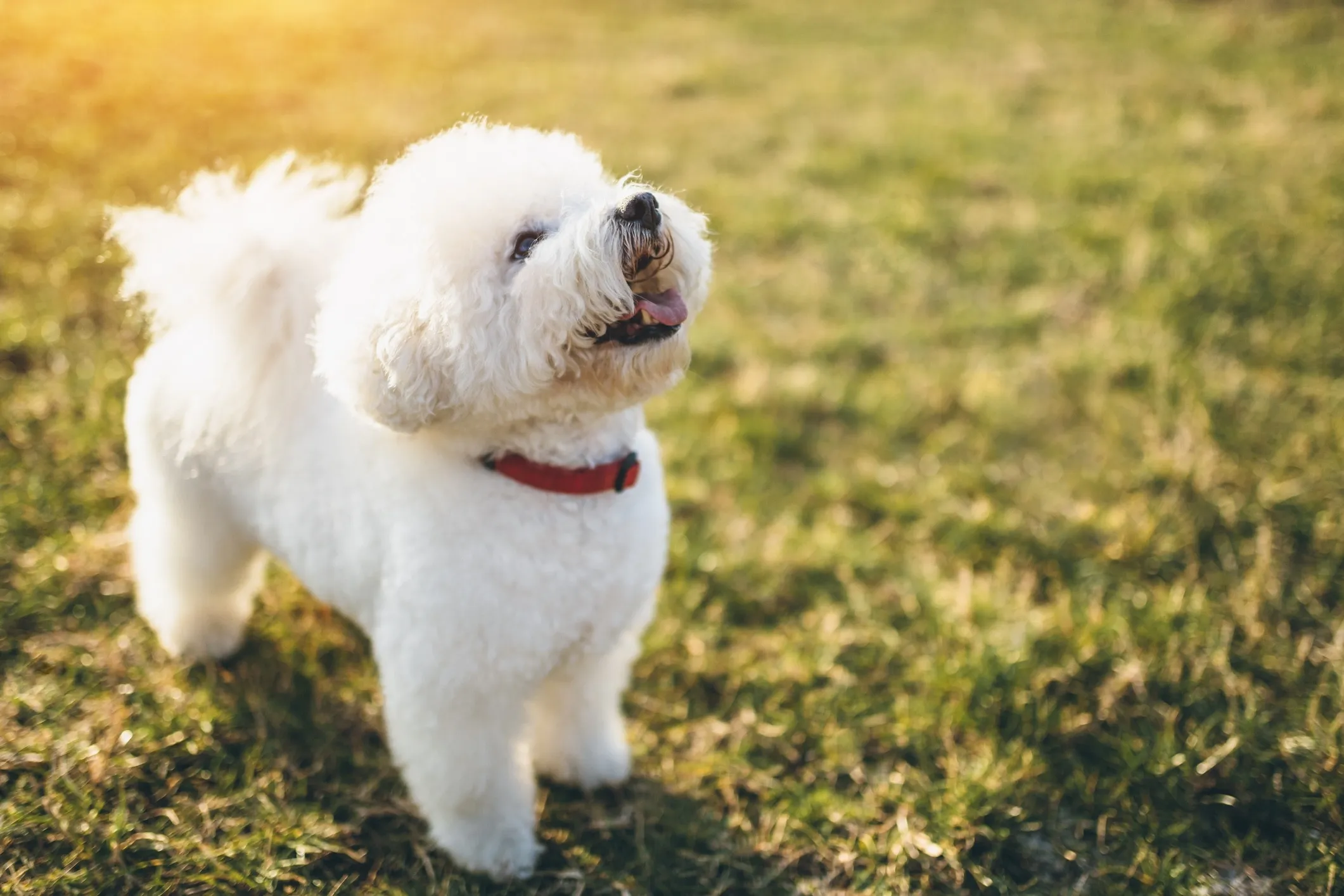 white bichon frise dog looking up in the grass
white bichon frise dog looking up in the grass
Bichon Frises are small, fluffy dogs with a cheerful disposition. Their curly, white coat is considered hypoallergenic due to its low-shedding nature. However, their coat requires significant grooming to prevent matting and maintain its pristine appearance. Bichons are affectionate and playful, thriving on human interaction, and making them excellent companions for families and individuals alike.
4. Shih Tzu
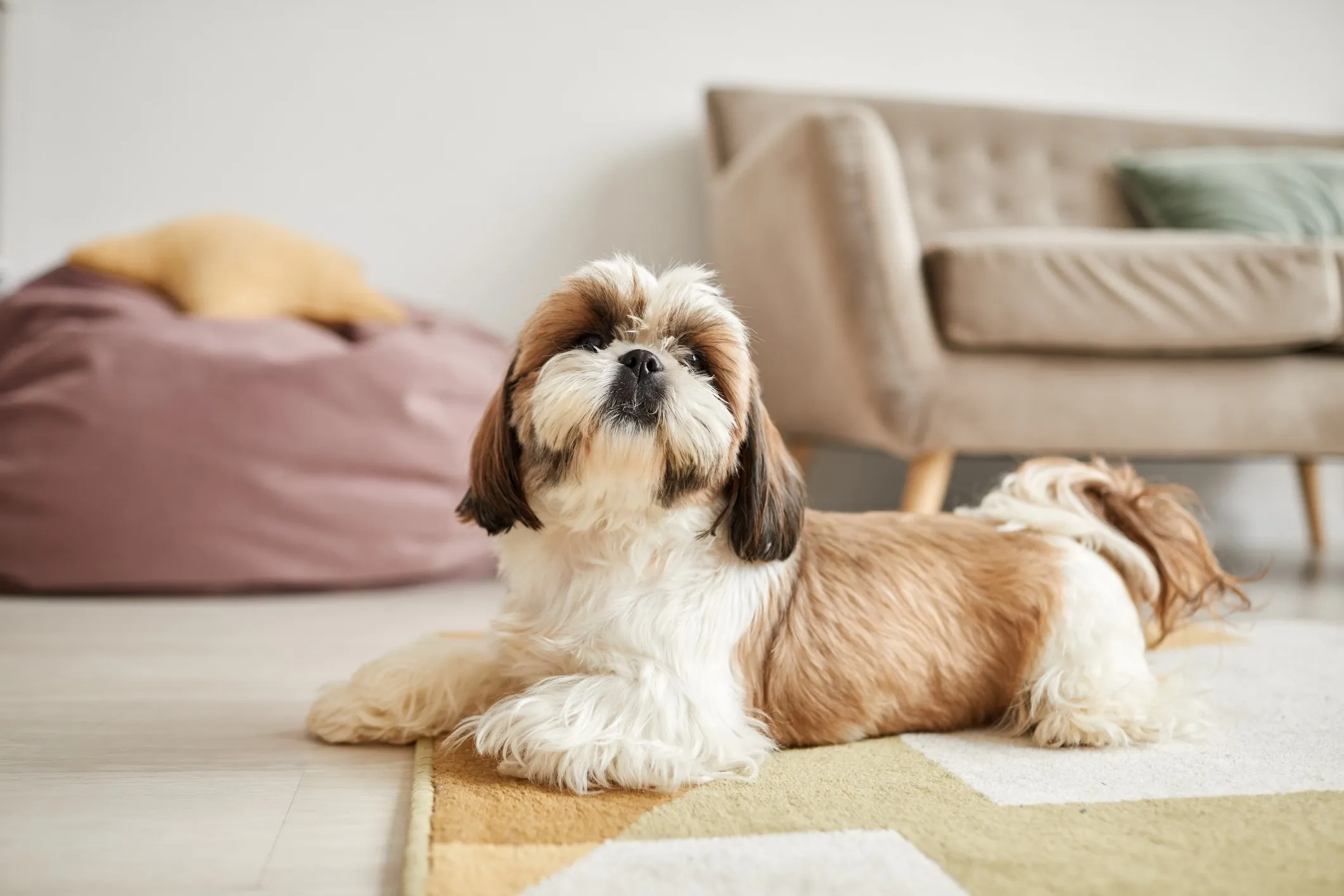 brown and white shih tzu lying on a living room floor
brown and white shih tzu lying on a living room floor
Shih Tzus are small, affectionate dogs with a long, flowing coat. While they do require regular grooming to prevent tangles and mats, they are considered relatively low-shedding. Their friendly and outgoing nature makes them wonderful companions, particularly for those seeking a lap dog that enjoys being pampered. Be mindful of their flat face, which can make them prone to breathing problems.
5. Portuguese Water Dog
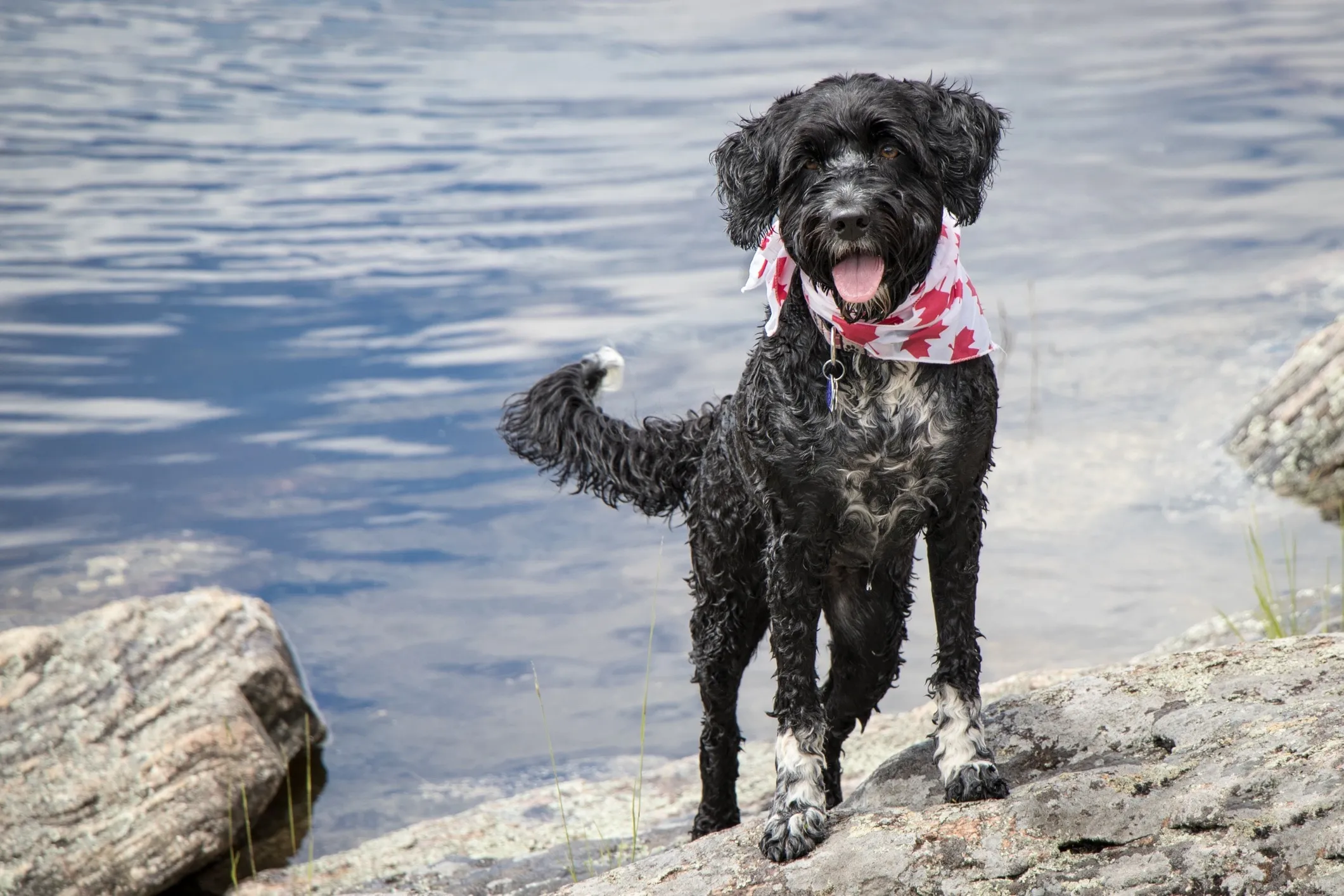 black and white portuguese water dog wearing a red maple leaf bandana in front of water
black and white portuguese water dog wearing a red maple leaf bandana in front of water
Portuguese Water Dogs are medium-sized, intelligent, and energetic dogs with a curly coat that sheds minimally. Originally bred to assist fishermen, they thrive on activity and enjoy swimming. Their hypoallergenic coat requires regular grooming to prevent matting. Portuguese Water Dogs are highly trainable and make loyal companions for active families.
6. Soft Coated Wheaten Terrier
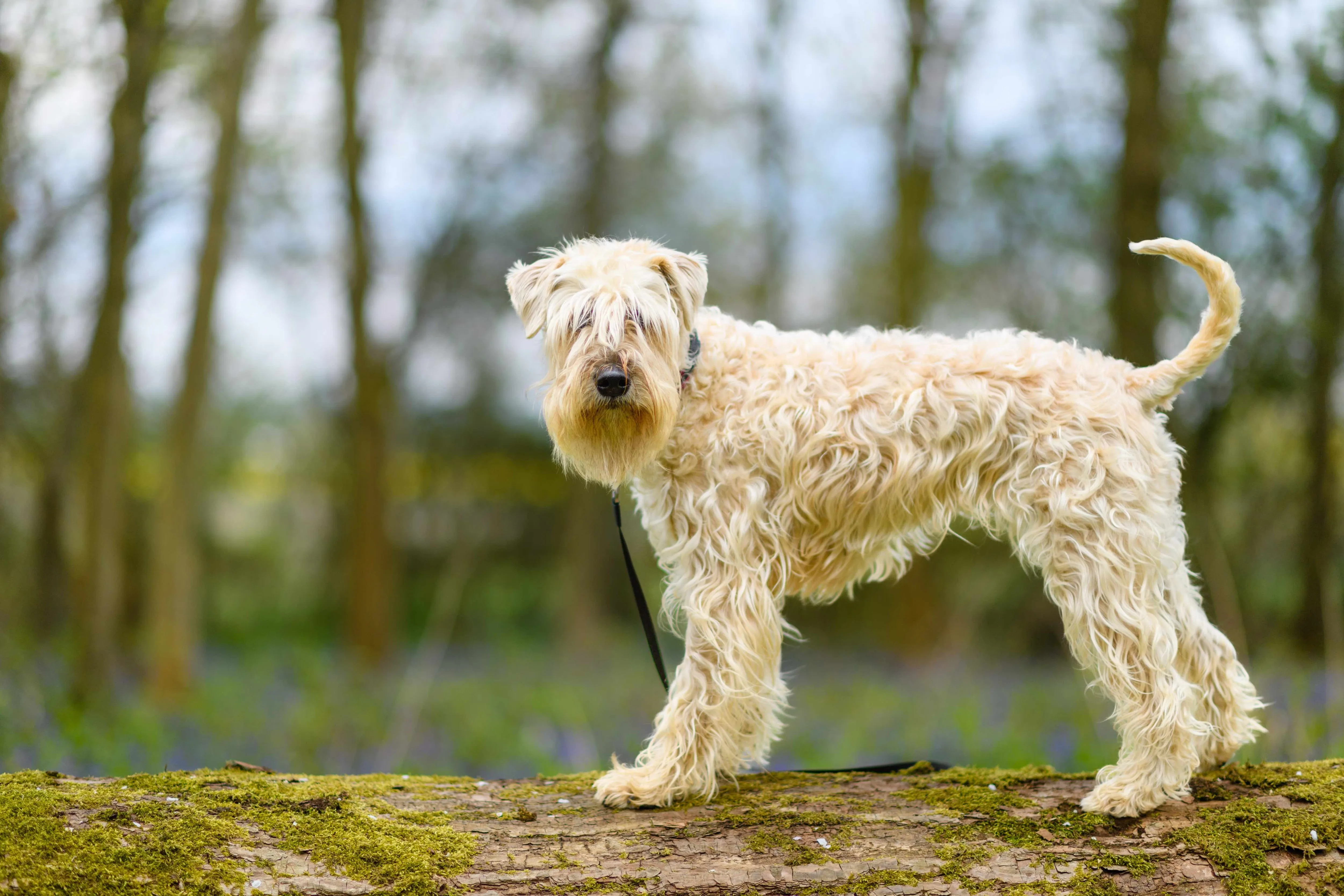 soft coated wheaten terrier dog on a log
soft coated wheaten terrier dog on a log
Soft Coated Wheaten Terriers are medium-sized dogs with a soft, wavy coat that sheds very little. They are known for their playful and affectionate personalities. These terriers require regular grooming to maintain their coat’s health and appearance. Wheaten Terriers need ample exercise and mental stimulation to thrive, making them a great fit for active households.
7. Lagotto Romagnolo
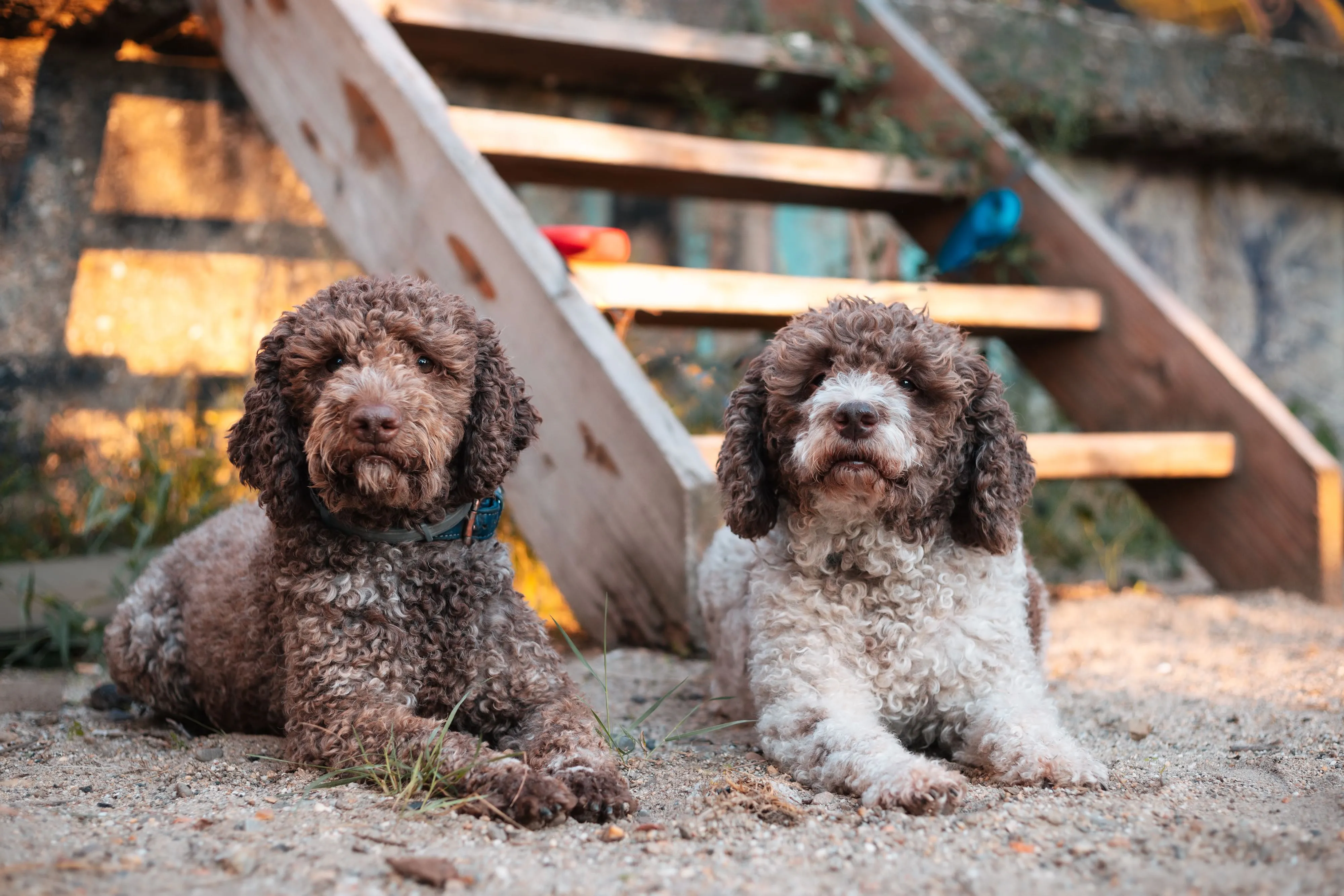 two lagotto romagnolo dogs lying in dirt staring at the camera
two lagotto romagnolo dogs lying in dirt staring at the camera
Lagotto Romagnolos are medium-sized dogs with a distinctive curly, woolly coat that sheds minimally. Originally bred as water retrievers, they are intelligent and energetic. Their hypoallergenic coat requires regular grooming to prevent matting. Lagotti Romagnoli are known to be good with children and other pets, making them excellent family dogs.
8. Yorkshire Terrier
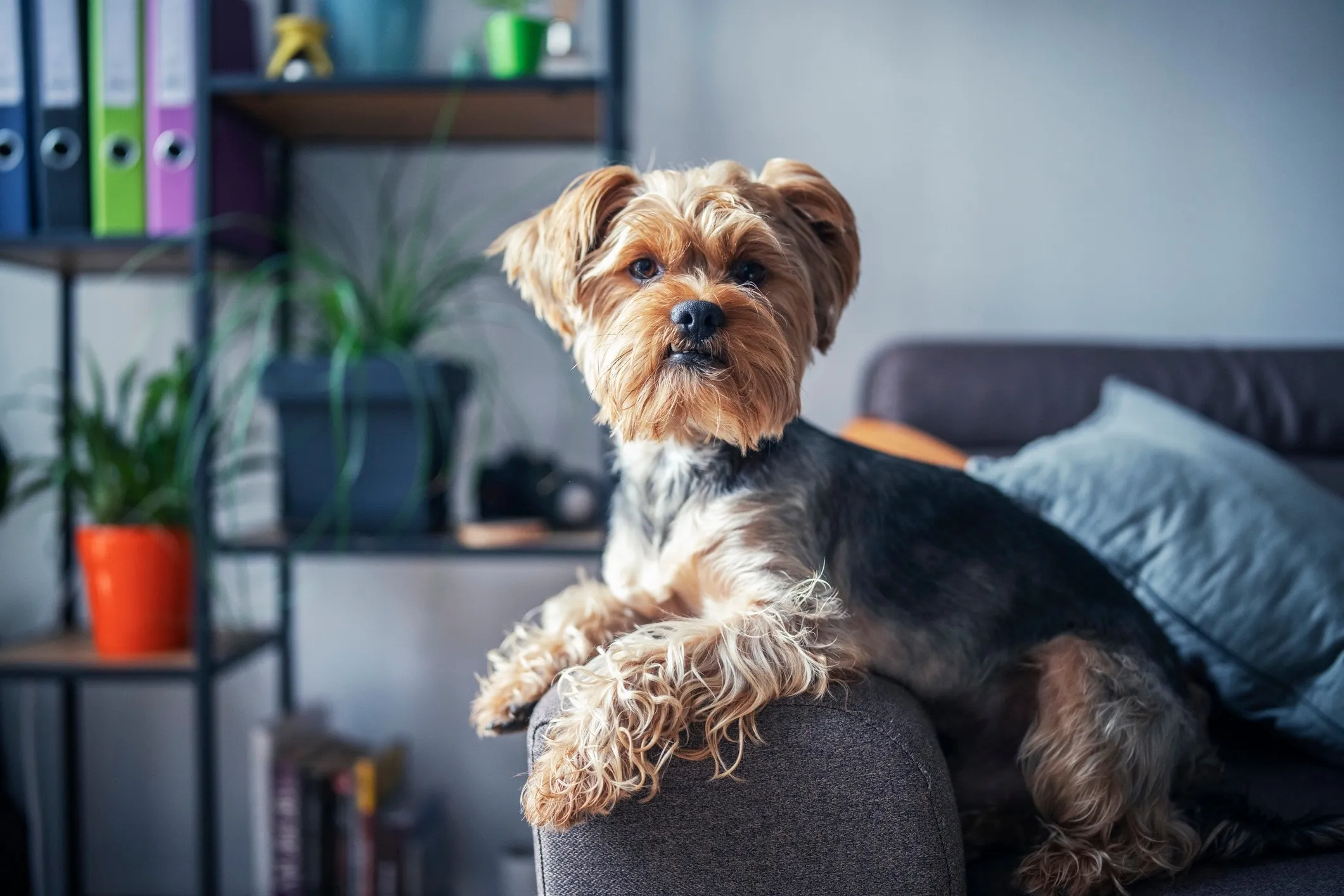 blue and tan torkie lounging on an arm chair
blue and tan torkie lounging on an arm chair
Yorkshire Terriers are small, charming dogs with a long, silky coat that’s often described as hypoallergenic. They don’t have an undercoat, which contributes to their low-shedding nature. Despite their small size, Yorkies have a big personality and are known for being affectionate and adaptable to various living situations. Regular grooming is essential to keep their coat healthy and tangle-free.
9. Maltese
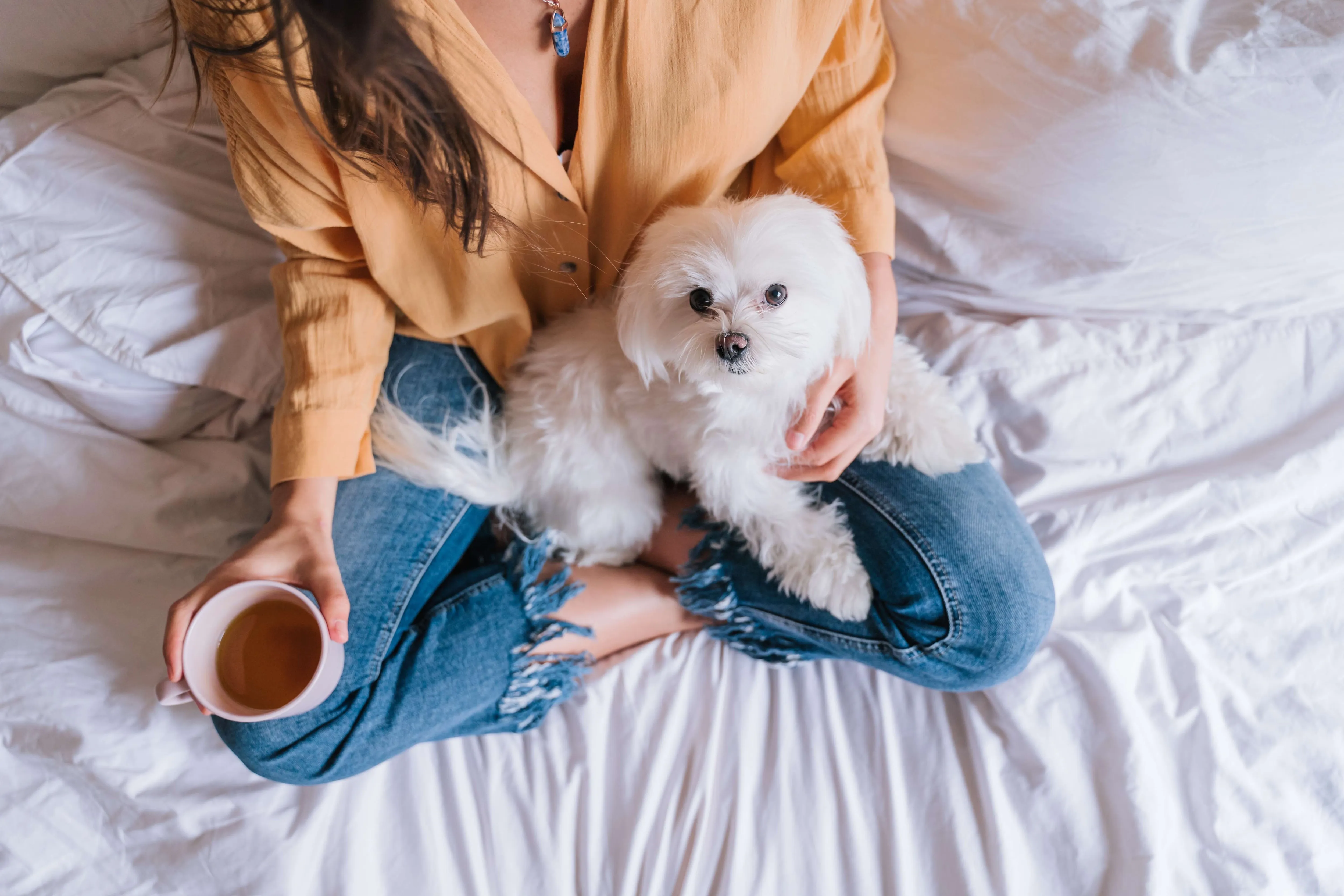 woman holding a white maltese dog on a bed
woman holding a white maltese dog on a bed
Maltese dogs are small, elegant companions known for their long, flowing white coat. They are considered hypoallergenic due to their lack of an undercoat and minimal shedding. Maltese are affectionate, playful, and enjoy being the center of attention. Regular grooming is necessary to keep their coat pristine and prevent matting.
10. Coton de Tulear
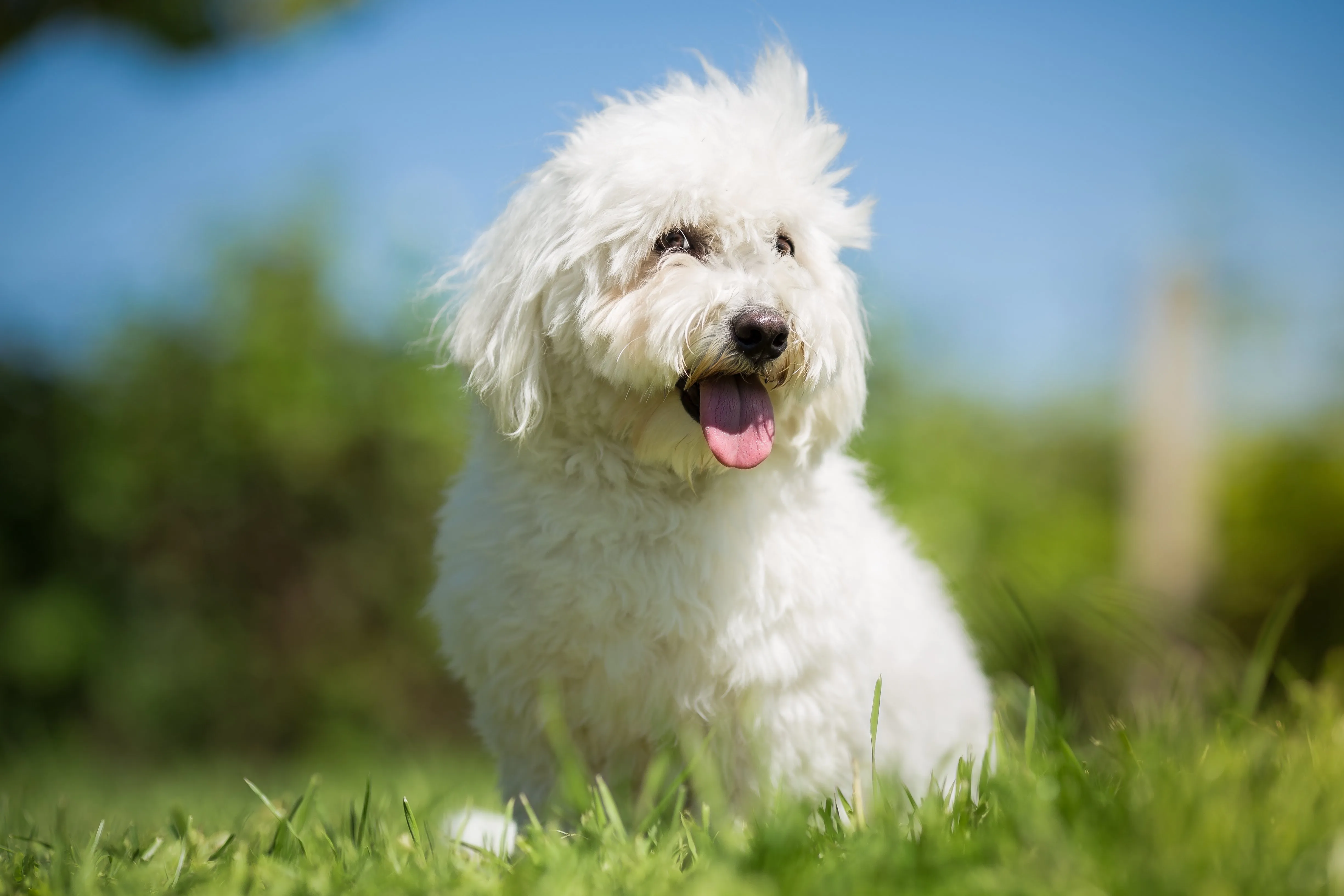 white coton de tulear sitting in grass with hair blowing in the wind
white coton de tulear sitting in grass with hair blowing in the wind
Coton de Tulears are small, charming dogs with a soft, fluffy white coat that resembles cotton. They are considered hypoallergenic due to their low-shedding nature. Cotons are known for their friendly and adaptable personalities, making them excellent companions for families and individuals. Regular grooming is necessary to keep their coat healthy and prevent matting.
Tips for Managing Allergies with Dogs
Even with a low-shedding breed, managing allergies is crucial for comfortable living:
- Regular Grooming: Brush your dog frequently to remove loose hair and dander. Professional grooming every few weeks can also be beneficial.
- Bathing: Bathe your dog regularly (every 4-6 weeks) with a hypoallergenic shampoo to minimize dander.
- Clean Home: Vacuum and dust frequently, paying attention to areas where your dog spends the most time.
- Air Purifiers: Use air purifiers with HEPA filters to remove airborne allergens.
- Wash Bedding: Wash your dog’s bedding regularly in hot water.
- Consult Your Doctor: Talk to your doctor about allergy medications or immunotherapy options.
Conclusion
Choosing a small to medium sized dog that doesn’t shed can be a wonderful way for allergy sufferers to enjoy the companionship of a canine friend. Remember that no dog is 100% hypoallergenic, and individual reactions can vary. Spend time with different breeds to find the perfect match for your allergies and lifestyle. With proper care and management, you can create a happy and healthy home for both you and your furry companion.
